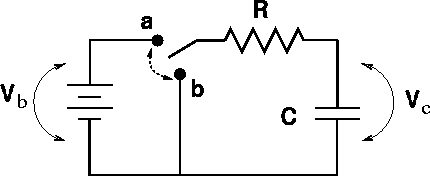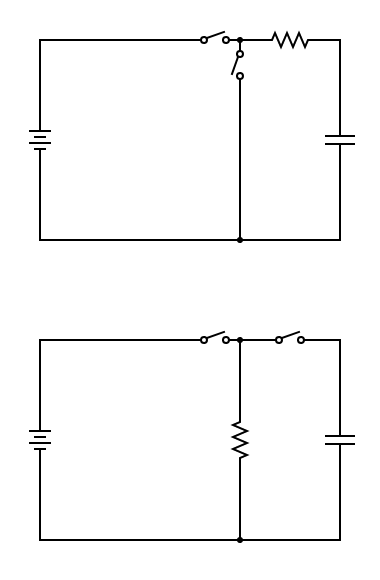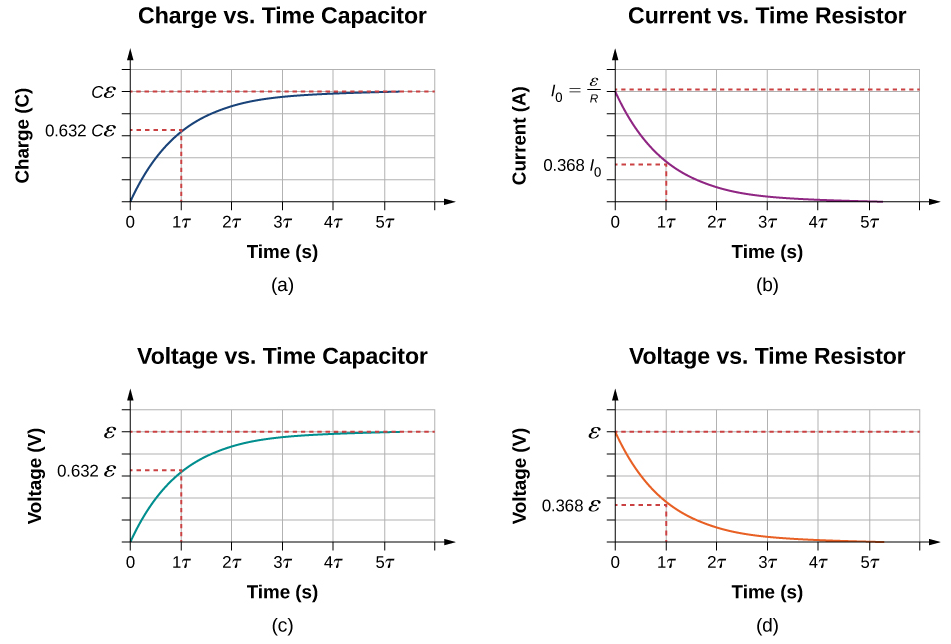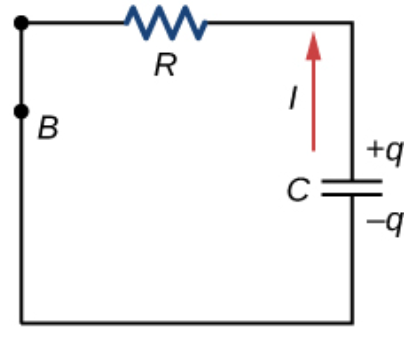RC circuits are circuits with a resistor and a capacitor.


Charging

When battery and capacitor are connected, capacitor charges until
Charge vs Time
To find the rate at which the capacitor charges, we can use Kirchoff’s Voltage Law, using as the emf of the battery, as the voltage of the resistor, and as the voltage of the capacitor.
Using a u-sub for , we get
Our final formula for charge as a function of time is
where is also called the time constant, .
vs Time
Since we know that , , and therefore
Current vs Time
Using the formula for charge as a function of time, we can find the formula for the current running through the resistor as a function of time.
Our final formula for current as a function of time is
vs Time
Since we know that , , and therefore
Summary

Discharging

The capacitor discharges until .
Charge vs Time
We can use Kirchoff’s Voltage Law again to find charge vs time.
Rewriting, we get that our formula for charge vs time is
Here, is actually the amount of times it takes for the charge to become the amount it was before, kinda like a half-life (but e-life???).
vs Time
Current vs Time
vs Time
Summary
